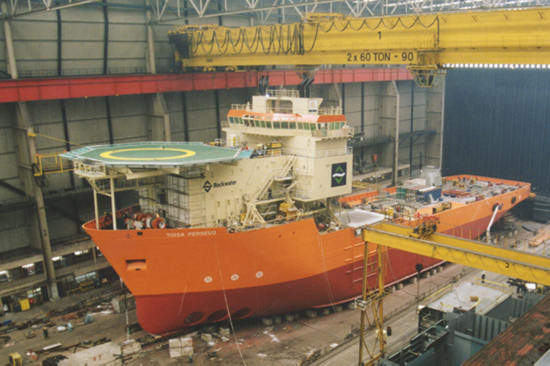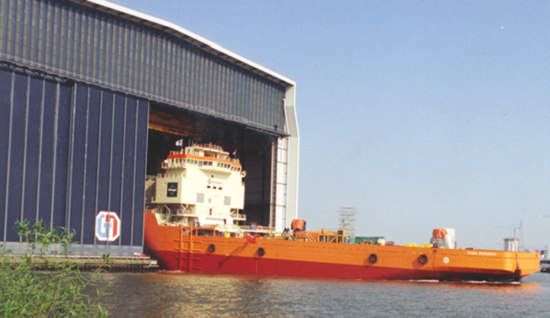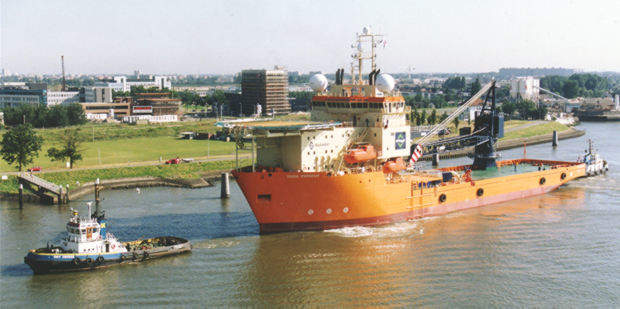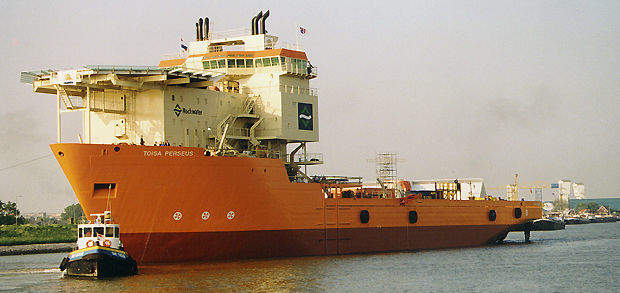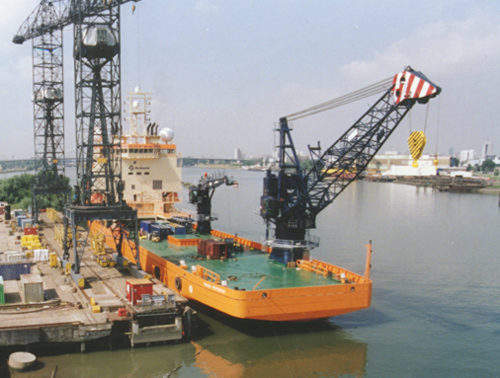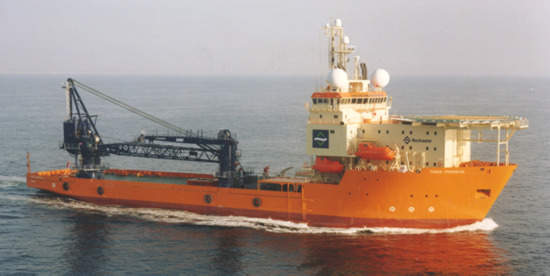Toisa Perseus can rightfully claim to be one of the most sophisticated deepwater offshore supply vessels ever built.
Her design, intended for the development of offshore oil fields in water more than 3,000m-deep, is the result of collaboration between her owner, Bermuda-based Toisa Shipping and Rockwater, a subsidiary of Brown & Root Energy Services.
The latter invested almost $9m to fit out the vessel to an advanced specification so that it could match the requirements of a five-year time charter. The 6,948gt Toisa Perseus was built at Van der Geissen de Noord in the Netherlands to Det Norske Veritas classification.
She flies the Red Ensign and her home port is registered as London. Soon after delivery in late 1998 she joined Rockwater’s fleet of three semi-submersibles and two diving support vessels.
Vessel design
Toisa Perseus is a monohull, multipurpose offshore support vessel with a large deck area and, at 5,728t, a high deadweight capacity. Her powerful dynamic positioning systems combined with a high transit speed make her ideal for diverless subsea installation of flexible pipes, risers, templates, manifolds, moorings and umbilicals.
She meets the same standards as a mobile offshore drilling unit and can support both drilling and live well intervention operations.
Key features include high capacity craneage, below decks carousels and large twin moonpool of 6m² each situated fore and aft. The forward pool is configured for flexi-lay and the aft pool for well intervention, workover and tool deployment.
She has a 1,640m² clear deck area that includes a mezzanine deck, where two work-class remotely operated vehicles are permanently installed, and there is a helideck forward of the accommodation.
Space is provided for 100 persons in single- and double-berth cabins and includes offices, a gymnasium and a hospital. Advanced IT equipment is installed as Rockwater wanted to ensure the vessel was compatible with its onshore activities, allowing staff to work the same way as if they were on land.
Toisa Perseus has a large storage capacity and lay system with two underdeck carousels, capable of holding up to 1,250t. Five reels each of 9.2m diameter can be used through the vertical lay system aft of the forward moonpool.
In addition, construction and storage are facilitated by two on-board cranes of 30t and 150t both on the starboard side but capable of lifting operations over the port side as well.
Propulsion
The propulsion system is a diesel electric arrangement based on four Wärtsilä 9L26 engines, each driving an alternator producing 2,660kW at 660V and providing a total installed power of 10,720kW.
There is also a single harbour generator of some 750kW and an emergency generator of 100kW. This arrangement provides power for two fully azimuthing fixed pitch, variable speed Kaplan nozzle thrusters located astern and in three variable pitch tunnel thrusters in the bow.
The stern thrusters give the vessel a service speed of 13.5k. Dual redundant engine rooms and separate compartments for the ship’s switchboards allow normal operations to continue in the event of an emergency.
Automation and control
The vessel’s dynamic positioning (DP) systems have Dynpos AUTRO and NMD Class three ratings, with control available from two fully independent control stations in the wheelhouse and the emergency control centre.
The control rooms all incorporate video, navigational, voice and networked links throughput the ship. The DP system has inputs for dual differential GPS, Artemis Fanbeam sonar, HiPA, tautwire, motion and heading sensors and fully redundant environmental sensors for deepwater positioning.

